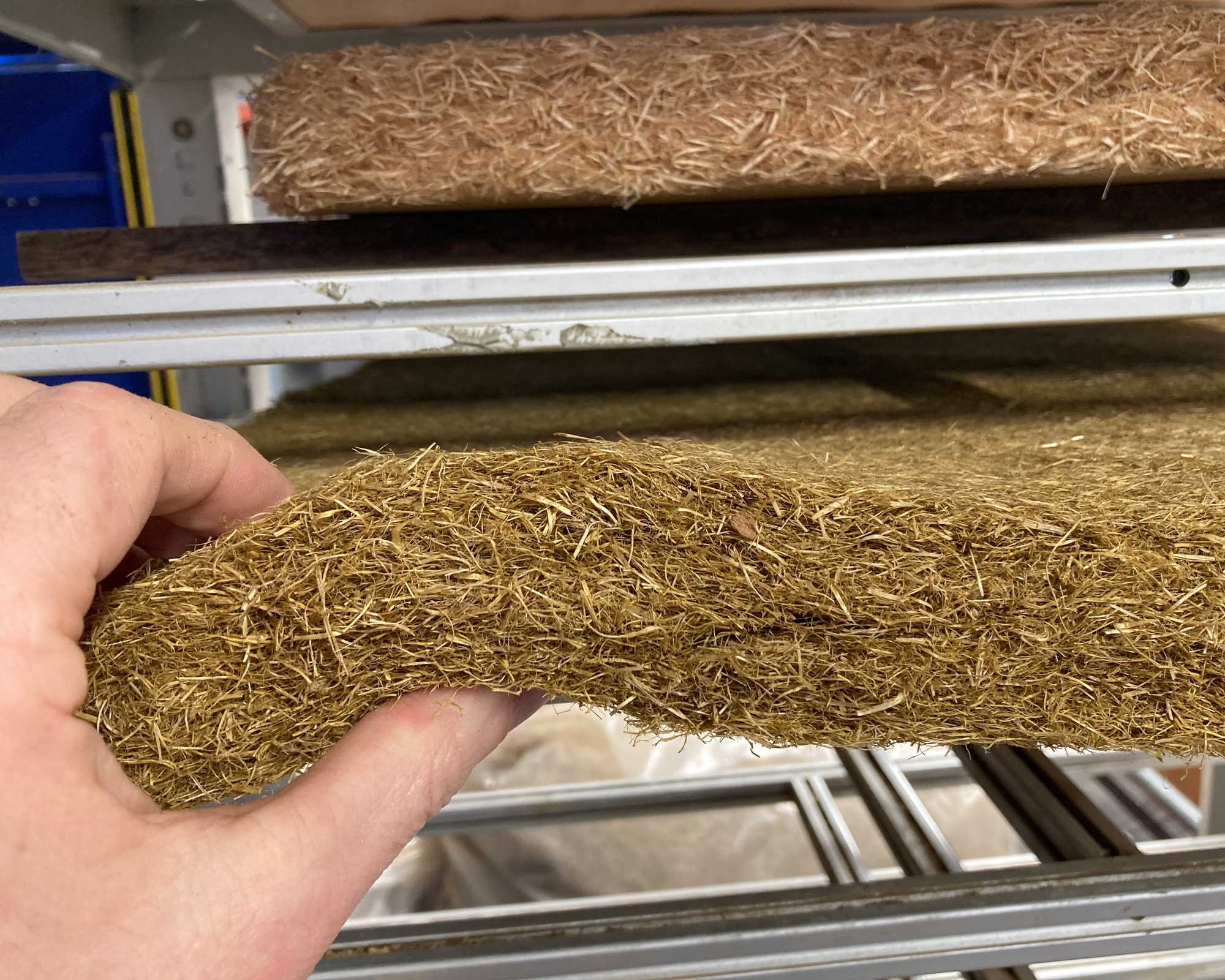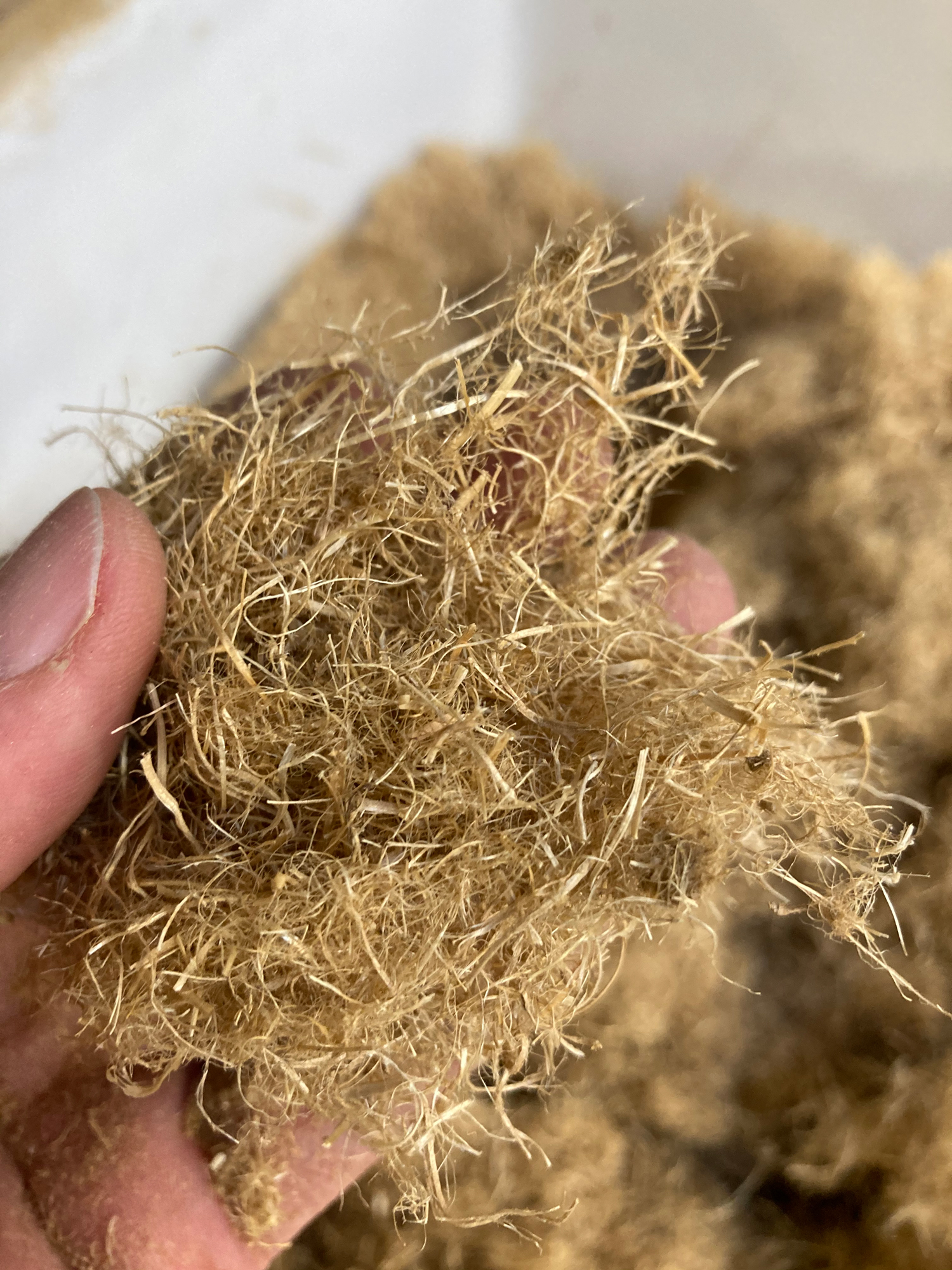In collaboration with the Fraunhofer WKI, Chile is pursuing the goal of sustainable building materials
Researchers at the Fraunhofer WKI, in collaboration with partners in Chile, have developed insulation materials from plant residues. As a result, the largely unused plant “waste” that accumulates in the Chilean agricultural, forestry and timber industries can now be utilized meaningfully. The utilization of insulation materials made from local raw resources provides a contribution towards improving the environmental balance of the construction industry in Chile and opens up new, previously untapped value-added possibilities.


The construction industry currently consumes vast quantities of petrochemical and mineral resources - in Chile, too. Building components and insulation made from wood and other renewable raw materials (NawaRo) are more environmentally and climate friendly. “With our project, we are opening up possibilities for the specific use of indigenous wood species and agricultural residues. In doing so, we are contributing towards sustainable land and forest management in Chile. Insulation materials made from renewable raw resources have been largely unknown in Chile up until now. The predominant insulation material there is expanded polystyrene, i.e. a petroleum-based product. Our project consequently also helps to increase the proportion of renewable raw materials in Chilean construction and, as a result, to conserve petroleum-based resources,” explained Norbert Rüther, Project Manager at the Fraunhofer WKI.
The forestry industry in Chile is the second-largest export sector after mining. This is due not least to the huge monocultures of exotic plants such as pine and eucalyptus, for which large areas of natural forest have been cleared since the 1970s. Currently, there are around 2.3 million hectares of fast-growing plantations in Chile - 17 percent of the entire forest area. Problems such as soil erosion, lack of biodiversity, and an imbalance of the ecosystem are leading towards a reversion to the natural resources of this country.
The researchers have produced three different types of insulation using plant “waste” from the Chilean agricultural, forestry and timber industries, which cover the typical forms of installation in residential construction:
- Compression-resistant insulation panels for exterior-wall insulation in an external thermal insulation composite system, basement-ceiling insulation or above-rafter insulation
- Flexible insulation mats for between-rafter insulation, floor-slab insulation or insulation of rear-ventilated façades.
- Blow-in insulation for insulating structural cavities.
“In our project, we wanted to find out whether residual and waste materials are suitable for the production of panel or mat materials that are compatible with building physics. We developed a wooden element which consists entirely of indigenous, renewable raw materials,” said Mr. Rüther. For application in construction, the materials have to meet the stringent structural requirements for buildings - which result from the intensified earthquake situation in Chile - as well as noise- and fire-protection standards and energy requirements.
The project has yielded important findings - and not just for Chile. “If predominantly renewable raw materials are utilized for the construction of buildings, CO2 is removed from the atmosphere and bound in the building materials. At the end of a building’s useful life, the building materials can be used as raw materials for other products, such as consumer articles. At the end of a long chain of recyclable materials, the materials can ultimately be incinerated without generating pollutants and can therefore be used to generate energy. Over the entire utilization phase, new raw materials grow back - in the ideal case, more than are used for the products. As a result, a sustainable cycle is created, which we urgently need for the future viability of the construction industry - including in Germany,” explained Mr. Rüther.
Funding
The project was funded by the German Federal Ministry of Education and Research (BMBF) via the project management agency Projektträger DLR (German Aerospace Center).
The background of the Fraunhofer WKI
Sustainability through the utilization of renewable raw materials has formed the focus at the Fraunhofer WKI for 75 years. The institute, with locations in Braunschweig, Hanover and Wolfsburg, specializes in process engineering, natural-fiber composites, binders and coatings, wood and emission protection, quality assurance of wood products, material and product testing, recycling procedures and the utilization of organic building materials and wood in construction. Virtually all the procedures and materials resulting from the research activities are applied industrially.
Last modified:
 Fraunhofer Institute for Wood Research
Fraunhofer Institute for Wood Research